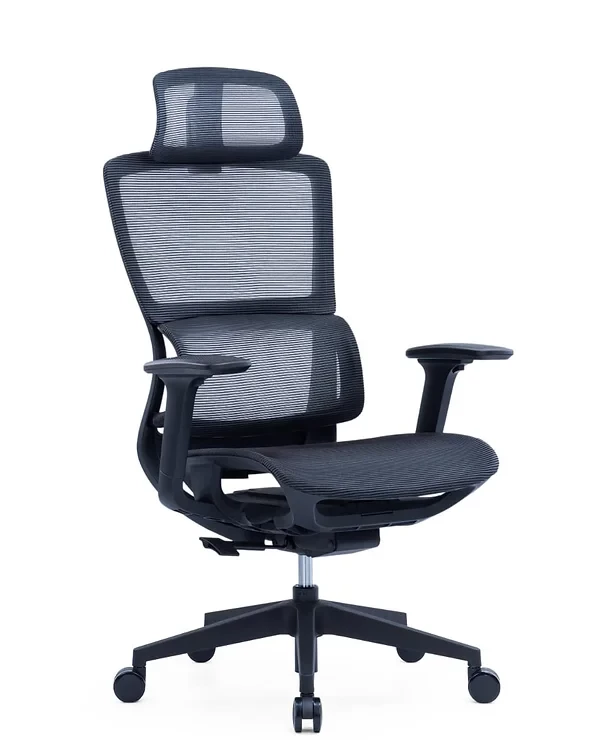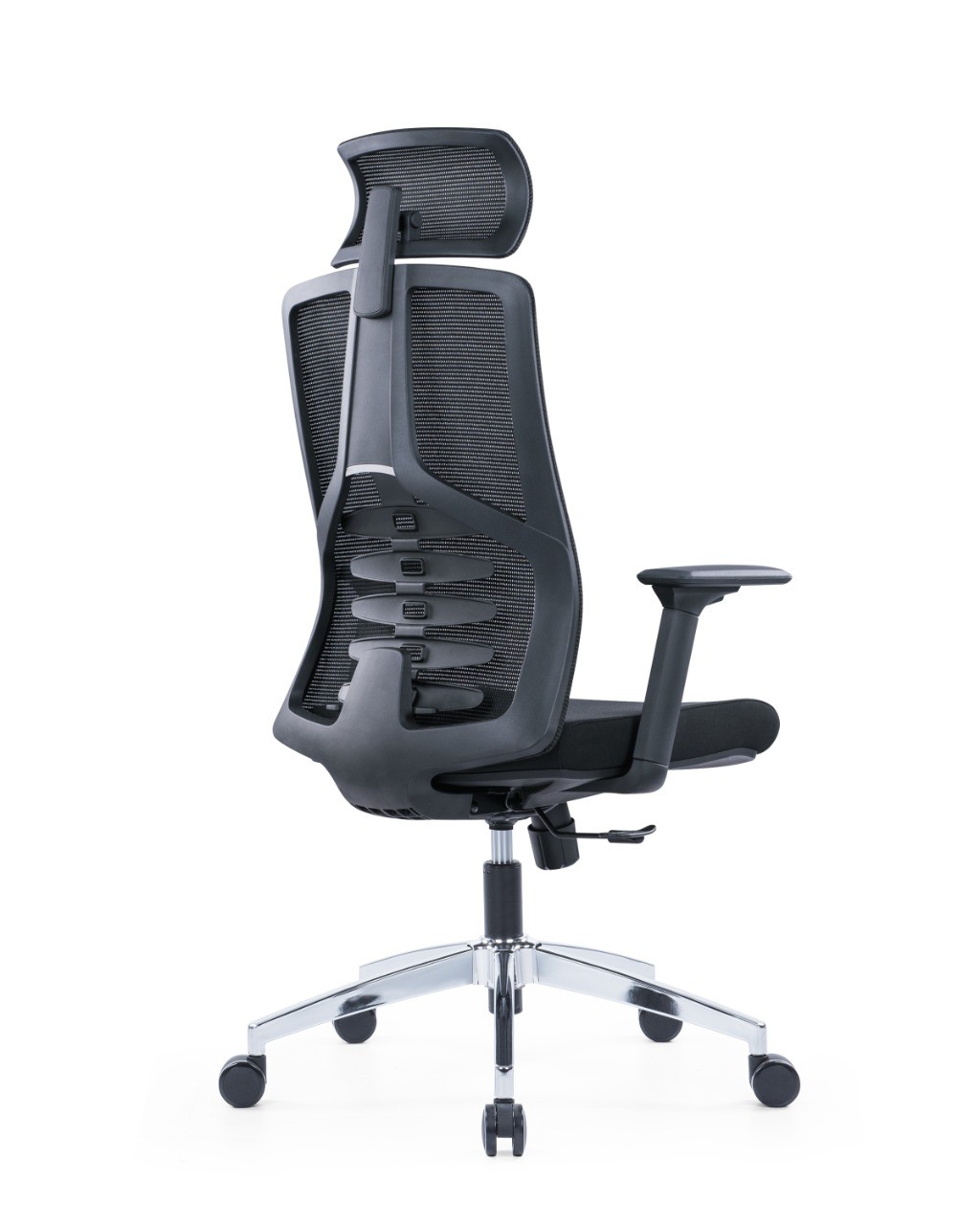
How to Choose a Chair for a Dual-Monitor Desk Setup
Introduction
Working with dual monitors offers increased efficiency, better multitasking, and a more immersive experience. But without the right office chair, this setup can lead to neck strain, poor posture, and reduced comfort over time. A dual-monitor arrangement requires a chair that offers superior mobility, adjustable ergonomics, and targeted support. Whether you’re a designer, analyst, or remote professional, your chair must help you swivel between screens smoothly and maintain a neutral posture throughout the day. In this guide, we’ll walk through the key features you should look for when choosing a chair tailored for dual-monitor use—along with essential considerations that ensure long-term comfort and performance.
1. Adjustable Armrests That Align with Monitor Height
When working with two monitors, armrests need to support your arms while you type and use a mouse across both screens. A chair with height- and width-adjustable armrests ensures your elbows stay at a comfortable 90-degree angle, minimizing wrist strain and shoulder fatigue. This also helps you maintain consistent posture whether you’re focused on one screen or scanning both. Ideally, the armrests should slide inward or outward to match the distance between your body and the keyboard, and they should be low-profile enough to tuck under your desk when not needed.
2. Synchro-Tilt or Recline Lock for Viewing Angles
Dual-monitor users often shift their gaze and body slightly throughout the day. A chair with synchro-tilt functionality allows the seat and backrest to move in harmony, keeping your posture aligned. The recline lock also helps when leaning back during breaks or reviewing content on one screen. These features reduce pressure on the lower spine and prevent the neck from craning forward. The ability to recline slightly also increases blood circulation, which is key for longer work hours.
3. High Backrest for Full Upper Body Support
A high-back ergonomic chair supports your upper back, shoulders, and neck—a must-have when switching between two monitors that may be placed at slightly different heights or angles. A full-length backrest encourages upright posture while giving you the freedom to lean back and stretch without losing support. For dual-monitor setups, this becomes even more important to maintain symmetrical alignment and reduce the temptation to hunch or tilt your body off-center.
4. Headrest to Reduce Neck Rotation
When using two screens, users tend to rotate their heads more frequently. A headrest can reduce neck fatigue by offering a resting point when you're viewing upper corners of the monitors or pausing during a call. Choose a chair with an adjustable headrest that supports the natural curve of your neck, whether you're upright or slightly reclined. This reduces strain on the cervical spine and helps prevent tension headaches or long-term discomfort.
5. Smooth 360-Degree Swivel for Screen Access
Dual-monitor work often involves turning between displays. A smooth, full-range swivel base allows you to pivot between screens without twisting your spine or torso awkwardly. This ensures your hips remain square to your desk and promotes better posture while navigating between projects or apps. Look for chairs with durable bases and high-quality casters to enhance movement and support dynamic work styles.
6. Lumbar Support that Moves with You
For dual-monitor users who constantly shift focus or seating angles, having adaptive lumbar support is critical. Chairs with flexible or adjustable lumbar zones support the lower spine’s natural curve even as your position changes. This ensures continuous back support, reduces fatigue, and promotes spinal health. Some models offer self-adjusting lumbar pads that contour to your body, ideal for people who work long hours and need active support.
7. Height Adjustability to Align with Monitor and Desk
Your eye level should be aligned with the top third of your monitor screen to avoid neck strain. A height-adjustable chair helps position your body so your monitors sit at an optimal level, reducing the need to look up or down constantly. A pneumatic height adjustment mechanism makes it easy to fine-tune your seating position throughout the day as your posture shifts or needs change.
8. Wide Seat with Waterfall Edge for Leg Comfort
Using a dual-monitor setup often requires a bit more desk space, which may cause you to shift or stretch more. A wide seat with a waterfall front edge supports your thighs and encourages proper circulation, even during extended sessions. It prevents pressure from building behind the knees and supports a healthy seated posture. For users with larger frames or who work for hours at a time, this is a must-have feature.
9. Breathable Material to Stay Comfortable
Dual-monitor setups often go hand-in-hand with high-performance tasks and long hours. Breathable mesh materials or breathable cushioning keep your body cool and supported without trapping heat. Especially in warmer climates or busy office spaces, this contributes significantly to comfort and prevents sweat buildup. Look for materials that offer airflow without sacrificing durability or support.
10. Stability and Build Quality for Active Workflows
You’ll need a chair that keeps up with your workflow. From rotating to rolling, leaning back to typing fast, a stable and well-built chair ensures you stay safe and supported. Dual-monitor users rely on movement and flexibility to multitask efficiently. Invest in a chair with a heavy-duty base, strong frame, and reliable tilt mechanism. Not only does this extend the lifespan of the chair, but it also prevents distractions or discomfort caused by wobbling.
Additional Considerations When Choosing a Chair for Dual-Monitor Work
11. Monitor Distance and Neck Health
The distance between you and each monitor affects how much your neck moves. Choosing a chair that lets you maintain a consistent viewing distance helps reduce unnecessary movement and eye strain.
12. Desk Compatibility with Chair Features
Make sure your desk height and layout support the chair’s armrests and swivel range. This ensures you’re not bumping into edges or limiting your motion as you navigate across your screens.
13. Daily Work Habits and User Roles
Developers, editors, designers, and analysts use dual-monitor setups differently. Choose a chair that supports your specific movement patterns and viewing needs to prevent discomfort unique to your workflow.
14. Shared Usage Among Multiple Users
If the desk is shared in a hybrid or hot-desking setup, choose a chair with quick, intuitive adjustments. This ensures different users can adapt it to their needs without hassle.
15. Floor Type and Wheel Base
Chairs used on carpet, hardwood, or tile behave differently. Make sure your chair’s wheels suit the surface to avoid resistance or slipping while switching between monitors.
16. Weight Capacity and User Fit
Every ergonomic benefit is only effective if the chair fits the user’s body type. Check for weight limits, seat depth, and height ranges that accommodate your size comfortably.
17. Budget vs. Long-Term Value
Higher-end chairs with robust features may cost more initially, but offer better durability and comfort—especially for dual-monitor users who sit for hours daily.
18. Ease of Maintenance
Choose materials and finishes that are easy to clean and resistant to wear. Office chairs that stay in good condition with minimal upkeep are ideal for active workspaces.
19. Eco-Friendliness and Sustainable Design
If sustainability matters, look for chairs made with recyclable materials or those certified for eco-conscious design. This ensures your office stays both ergonomic and responsible.
20. Style and Aesthetic Integration
While function comes first, style isn’t far behind. Chairs with sleek designs and neutral colors integrate well into modern dual-monitor setups, enhancing the look of your workspace.
Recommended Products

-
Chablo Executive High Back Ergonomic Office Chair – Black
This chair offers a commanding high back, adjustable headrest, and synchronized tilt that perfectly supports active dual-monitor workflows. With premium padding and robust lumbar support, it blends executive aesthetics with everyday functionality.
-
Sitma Black Ergonomic Executive Chair
Designed for long work sessions, Sitma features adjustable armrests, breathable mesh, and a responsive recline system. Its smooth swivel base and sleek profile make it ideal for tech-driven professionals using multiple monitors.
Final Thoughts
A chair for a dual-monitor setup isn’t just about comfort—it’s a tool for productivity, posture, and performance. The right model will support your body while you multitask, shift between applications, and maintain focus for hours. With features like adjustable armrests, swivel capability, full back support, and breathable materials, you can transform your dual-monitor setup into an ergonomic command center. Take the time to evaluate your habits, desk space, and comfort preferences so you can choose a chair that truly supports the way you work.
FAQ
What type of chair is best for dual-monitor setups?
An ergonomic high-back chair with adjustable armrests, lumbar support, and swivel capability is ideal for dual-monitor workspaces.Do I need a headrest for dual-monitor use?
While not mandatory, a headrest can help reduce neck fatigue during extended periods of shifting between screens.How high should my chair be for dual monitors?
Your chair height should allow your eyes to align with the top third of the monitor screens, maintaining a neutral neck position.Can a regular chair work with a dual-monitor setup?
A regular chair may not offer the ergonomic support needed. A specialized ergonomic chair is better for long-term comfort and health.


